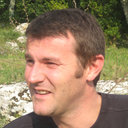

SMARTIES Team
Smart Integrated Electronic Systems
The SmartIES team, “Smart Integrated Electronic Systems”, is a team of around 30 researchers (11 permanent staff) whose activities focus on the design, analysis and modeling of integrated devices and systems based on CMOS, CMOS-compatible (MRAM) or future technologies (CNT, CNTFET), and incorporating innovative functionalities, devices and concepts (AI, intelligent sensors, hardware intrusion detection). Improving energy efficiency and hardware security, without degrading services, are the major objectives of our work. Embedded and non-embedded data processing methods are thus at the heart of our concerns for a wide range of applications (environment, life, security, etc.).
SmartIES is characterized by its determination to conduct research work from theoretical concepts to the development of demonstrators or measurement benches, hardware and software platforms, and their deployment in realistic application contexts.
In recent years, a great deal of work has led to the development of hardware (ASICs, dedicated experimental platforms, hardware and/or software prototypes) and contributed to technology transfer.
Staff
Nadine Azémard-Crestani, Chargé de recherche, CNRS
Jean-Marc Galliere, Maître de conférences, UM
Frédérick Mailly, Maître de conférences, UM
Vincent Kerzerho, Chargé de recherche, CNRS
Serge Bernard, Directeur de recherche, CNRS
Guy Cathebras, Professeur des universités, UM
Fabien Soulier, Maître de conférences, UM
Philippe Maurine, Maître de conférences, UM
Pascal Nouet, Professeur des universités, UM
Loic Masure, Chargé de recherche, CNRS
Laurent Latorre, Professeur des universités, UM
Associates and Students
Antoine Landreau, CNRS
Anselme Mouette, UM
Sarah Belgaid, UM
Stephane Pitou, CNRS
Thomas Chevrier, SAS COOOL
Quentin Ponzo, UM
Thomas Falanga, UM
Sara Sahraee, UM
Ziling Liao, CNRS
Abdoul Aziz Ndiaye, SERMA Group
Nathan Rousselot, THALES
Regular Co-workers
Jason Cerisier, CDD Ingénieur-Technicien, CNRS
Thibaut Pelliccia, CDD Ingénieur-Technicien, CNRS
Geoffrey Chancel, CDD Chercheur, CNRS
Fathi Ben Ali, CDD Ingénieur-Technicien, AxLR
Jacques Benoit, CDD Ingénieur-Technicien, CNRS
Amaury Boguais, CDD Ingénieur-Technicien, CNRS
Vincent Serantoni, CDD Ingénieur-Technicien, UM
Loïc Demange, CDD Chercheur, CNRS
Sami Bouzid, CDD Ingénieur-Technicien, CNRS
Keywords: data acquisition & fusion, signal processing, life and environmental observation, biosensors, bioimpedance, MEMS/NEMS.
SmartIES develops sensors and the integrated electronics required to operate them, for specific or generic applications.
Specific systems have been developed for :
- measurement of bioelectrical signals (peripheral nervous system),
- intraocular pressure measurement (glaucoma diagnosis or prevention),
- broadband bioimpedance spectroscopy (fat content, tissue condition, vitellogenesis and swimming speed in fish),
- CNT-FET-based biosensors (cancer-related enzymatic activity).
A three-axis thermal accelerometer based on a CMOS manufacturing process, and offering excellent performance, was also recently proposed as part of a joint thesis with the University of Sfax (Tunisia).
Generic interfaces for resistive, capacitive or field-effect sensors are also being developed for transducer conditioning and analog-to-digital signal conversion. Based in particular on a laboratory patent for current recycling amplifiers and SD-type architectures, they are compact, robust, adaptive, low-power and as close as possible to the sensor. Other, more specific interfaces have been proposed to replace laser abrasion calibration in high-end resistive sensors.
Finally, SmartIES designs geo-located, communicating multi-sensor systems. Target applications include aquatic species (tuna, marlin, turtles) for physiological parameter measurements, and terrestrial species (elephants, lions, zebras) for audio recordings for ecologists.
Finally, as the ever-decreasing cost of sensors makes it possible to design systems with massive redundancy, SmartIES is developing data fusion algorithms based on neural networks, complementary filtering or dynamic weighting to improve the resolution, fault tolerance and robustness of these measurement systems.
Keywords: covert channel attacks, fault injection attacks, circuit integrity and authenticity, machine learning signal processing and countermeasures, mathematical proofs.
smartIES’ work focuses on improving the security of integrated devices (from microcontrollers to SoCs) against hardware attacks such as co-channel and fault injection attacks. All the algorithmic, mathematical and physical means are considered to increase the resilience of information systems.
Similarly, threats to the integrity and authenticity of embedded objects are a primary concern for the team, in the face of threats such as counterfeiting and Trojan horse insertion.
SmartIES’ expertise in the field of security is reflected in its know-how in the following areas:
- Masking and proof of masking security,
- Design and characterization of secure circuits and systems capable of withstanding attacks (SCA and by IF) conducted for the purposes of denial of service or secret extraction,
- Modeling of electromagnetic emissions and leakage from integrated circuits,
- Impact of electromagnetic pulses on secure ICs,
- Improvement of CAD flows for secure IC design,
- Detection of hardware Trojans and counterfeits.
Keywords: 3D integration, carbon nanotubes, MRAM, sensors, biosensors, advanced analog design, adaptive circuits and systems, statistical design methods, low-power design.
SmartIES evaluates, in advance of their industrial availability, the interest of new technological nodes and new materials that can advantageously replace silicon in the design of tomorrow’s Integrated Circuits.
In the first instance, carbon nanotubes, a one-dimensional (1D) material, are emerging as a promising solution for the design of ultra-low-power ICs. Other alternatives include two-dimensional materials (graphene, MoS2, etc.) and vertical stacks of different 2D materials forming Van Der Waals heterostructures. This work has applications for the design of biosensors with 1D/2D field-effect components.
Secondly, spintronic memories, such as STT or SOT MRAM, are explored as credible alternatives to the non-volatile memories of the industrial state-of-the-art. SmartIES’ contributions focus on the structural and electrical levels, with contributions based on patent-pending current-recycling sense amplifiers and electrical simulation methods for MRAM-type memories in a heterogeneous IC design flow.
In this quest for energy efficiency, SmartIES is also exploring, in collaboration with the ADAC team for systems aspects, SRAM-type volatile memories in advanced or very advanced technologies, and 3D stacking integration paths that should enable very high density at low cost. Work on memories benefits from a long-term collaboration with a leading European partner in research into tomorrow’s technologies.
All this work draws on SmartIES’ expertise in electrical modeling and the design of analog and mixed-signal integrated circuits, taking into account the effects of variations in manufacturing processes.
Title: Plateforme à base de CNT-FET pour le développement de biocapteurs électrochimiques à forte sélectivité et sensibilité
PhD defendant: Sarah Belgaid
Defense date: 2025-06-30
Thesis director:
Serge Bernard
Title: Attaques par Canaux Auxiliaires Horizontales en Présence de Bruit
PhD defendant: Gauthier Cler
Defense date: 2024-07-04
Thesis director:
Philippe Maurine
Title: Injection de fautes par impulsion dans le susbstrat : modélisation
PhD defendant: Geoffrey Chancel
Defense date: 2024-01-29
Thesis director:
Philippe Maurine
Title: Conception d’Architecture pour les Réseaux de Neurones Oscillants Analogiques
PhD defendant: Corentin Delacour
Defense date: 2023-12-19
Thesis directors:
Aida Todri-Sanial,
Nadine Azémard-Crestani
Title: Implémentation de réseaux de neurones oscillatoires digitaux sur FPGA pour des application et de l’apprentissage pour l’intelligence artificielle embarquée
PhD defendant: Madeleine Abernot
Defense date: 2023-12-18
Thesis directors:
Aida Todri-Sanial,
Nadine Azémard-Crestani
Title: Une Approche de Conception d’Enregistreur Bioacoustique Efficient en Energie dans le Contexte de la Classification d’Événements Audio par Apprentissage Automatique.
PhD defendant: Jonathan Miquel
Defense date: 2023-12-15
Thesis director:
Laurent Latorre
Title: Solutions innovantes pour le conditionnement de capteurs résistifs
PhD defendant: Ibrahim Shankhour
Defense date: 2022-12-09
Thesis director:
Pascal Nouet
Title: Analyse par Canaux Auxiliaires Non-Supervisée Basée sur l’Information Mutuelle et son Estimation Neurale
PhD defendant: Valence Cristiani
Defense date: 2022-12-07
Thesis director:
Philippe Maurine
Title: Système embarqué multicapteurs intelligents de géolocalisation pour les animaux marins
PhD defendant: Pierre Gogendeau
Defense date: 2022-11-29
Thesis director:
Serge Bernard
Title: Développement et optimization des performances dun accéléromètre convective triaxial CMOS micro-usiné
PhD defendant: Sonia Abdellatif
Defense date: 2022-11-08
Thesis directors:
Brahim Mezghani,
Pascal Nouet
Title: Implémentation, analyse et améliorations bas-niveau d’algorithmes quantiques pour le calcul scientifique.
PhD defendant: Adrien Suau
Defense date: 2022-10-27
Thesis director:
Aida Todri-Sanial
Title: Compilation de circuits et atténuation des erreurs pour l’informatique quantique à court terme
PhD defendant: Siyuan Niu
Defense date: 2022-10-25
Thesis director:
Aida Todri-Sanial
Title: Modélisation des émissions électromagnétiques dans les composants sécurisés
PhD defendant: Davide Poggi
Defense date: 2022-04-20
Thesis director:
Philippe Maurine
Title: Amélioration des résolutions spatiale et temporelle des plateformes d’analyse et d’injection électromagnétiques
PhD defendant: Julien Toulemont
Defense date: 2021-12-13
Thesis directors:
Pascal Nouet,
Philippe Maurine
Title: Développement d’un biocapteur à base de transistors en nanotubes de carbone
PhD defendant: Nicolas Champauzas
Defense date: 2021-04-14
Thesis directors:
Aida Todri-Sanial,
Serge Bernard
Title: Évaluation de la Menace dAttaques par Canaux Auxiliaires sur Appareils Mobiles
PhD defendant: Aurélien Vasselle
Defense date: 2020-12-16
Thesis director:
Philippe Maurine
Title: Etude de circuits de détection et d’IPs analogiques basés sur les jonctions tunnel magnétiques pour la prochaine génération de circuits et systèmes CMOS
PhD defendant: Jad Mohdad
Defense date: 2020-12-09
Thesis director:
Pascal Nouet
Title: Modélisation de linjection de faute électromagnétique sur circuit intégré sécurisé et contre-mesures
PhD defendant: Mathieu Dumont
Defense date: 2020-10-09
Thesis director:
Philippe Maurine
Title: Analyse et développement d’algorithmes de fusion de données pour les matrices de capteurs
PhD defendant: Josue Rivera Velazquez
Defense date: 2020-07-17
Thesis director:
Pascal Nouet
Title: Imagerie Infrarouge, Intégrité des Circuits Intégrés et Sécurité Matérielle
PhD defendant: Maxime Cozzi
Defense date: 2019-11-18
Thesis director:
Philippe Maurine
Title: Méthodologie dinjection de fautes par médium électromagnétique sur Systèmes sur Puces et analyse de leur propagation dans des architectures complexes
PhD defendant: Maxime Madau
Defense date: 2019-11-08
Thesis director:
Philippe Maurine
Title: Exploration de nanotubes de carbone et de composites de nanotubes-cuivre pour des applications d’interconnexion sur puce de la prochaine génération efficacité energitique
PhD defendant: Jie Liang
Defense date: 2019-06-17
Thesis director:
Aida Todri-Sanial
Title: Conception et optimisation d’une alimentation-horloge et d’un réseau de distribution pour la logique adiabatique.
PhD defendant: Nicolas Jeanniot
Defense date: 2018-11-28
Thesis director:
Aida Todri-Sanial
Title: Conception dun système intégré de mesure de bioimpédance pour le suivi long terme de la composition des tissus biologiques
PhD defendant: Achraf Lamlih
Defense date: 2018-11-26
Thesis director:
Serge Bernard
Title: Solutions pour l’amélioration des performances des miroirs de courant dynamiques CMOS : Application à la conception de source de courant pour des dispositifs biomédicaux.
PhD defendant: Mohan Julien
Defense date: 2018-11-23
Thesis director:
Guy Cathebras
Title: Nouvelles architectures intégrées d’interfaces capteurs en technologie SOI, pour applications très hautes températures
PhD defendant: Emna Chabchoub
Defense date: 2018-11-05
Thesis director:
Pascal Nouet
Title: Simulation et modélisation des effets de l’injection de fautes laser sur les circuits intégrés
PhD defendant: Raphael Camponogara-Viera
Defense date: 2018-10-02
Thesis director:
Philippe Maurine
Title: Auto-adaptation appliquée à un dispositif de mesure de variation de pression intra-oculaire
PhD defendant: Anthony Deluthault
Defense date: 2017-07-05
Thesis director:
Serge Bernard
Title: Microsystèmes inertiels vibrants pour application spatiales : apport des fonctions numériques
PhD defendant: Baptiste Maréchal
Defense date: 2016-12-19
Thesis director:
Pascal Nouet
Title: Etude des mécanismes de contamination particulaire et des moyens de detection: proposition et evaluation de solutions innovantes pour la detection en temps-reel de la sedimentation des particules sur les surfaces critiques
PhD defendant: Nina Menant
Defense date: 2016-12-16
Thesis directors:
Laurent Latorre,
Pascal Nouet
Title: Développement d’une unité de mesure inertielle à base de Smart-MEMS
PhD defendant: Gaurav Chatterjee
Defense date: 2016-12-15
Thesis director:
Pascal Nouet
Title: Etude statistique de lénergie dans les circuits intégrés CMOS-FDSOI : caractérisation et optimisation
PhD defendant: Rida Kheirallah
Defense date: 2016-10-19
Thesis director:
Nadine Azémard-Crestani
Title: Conditionnement de capteurs capacitifs dans des systèmes faible consommation
PhD defendant: Patcharee Kongpark
Defense date: 2016-10-14
Thesis directors:
Laurent Latorre,
Pascal Nouet






